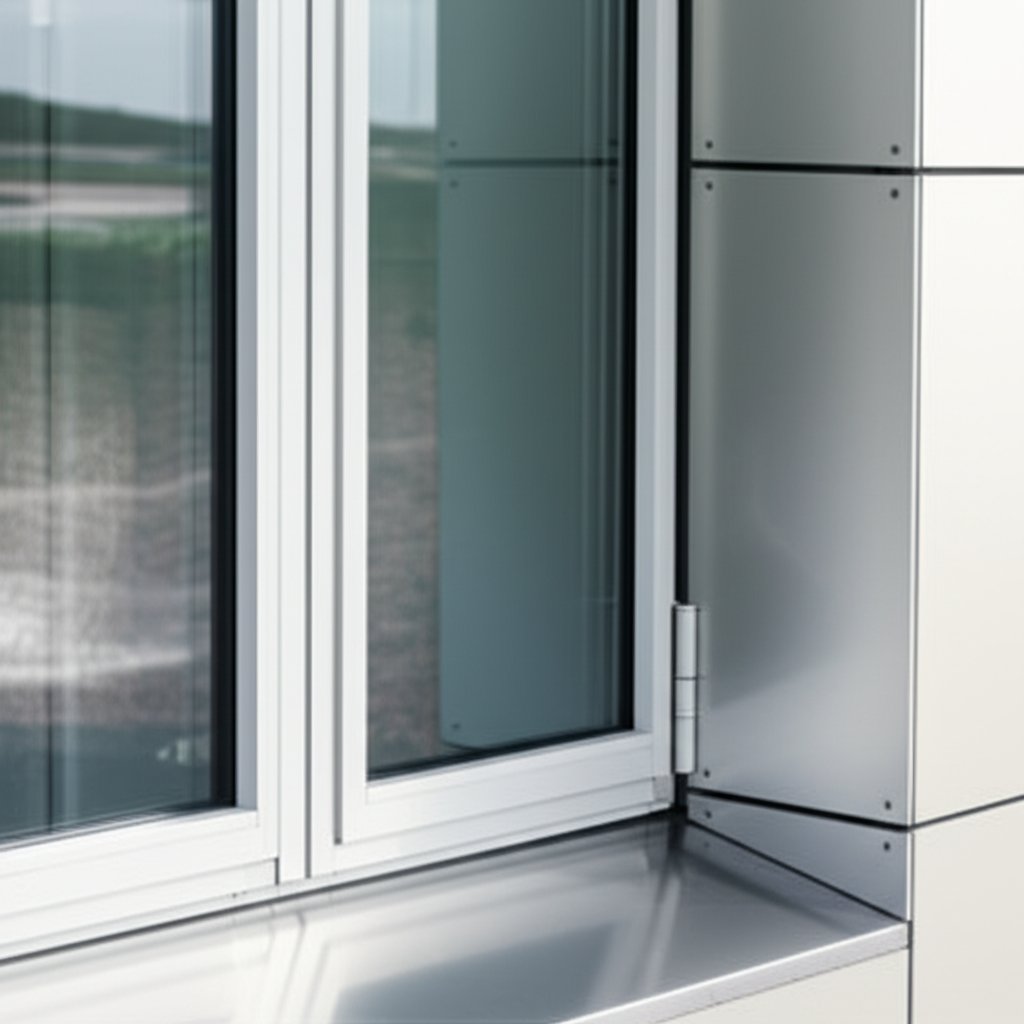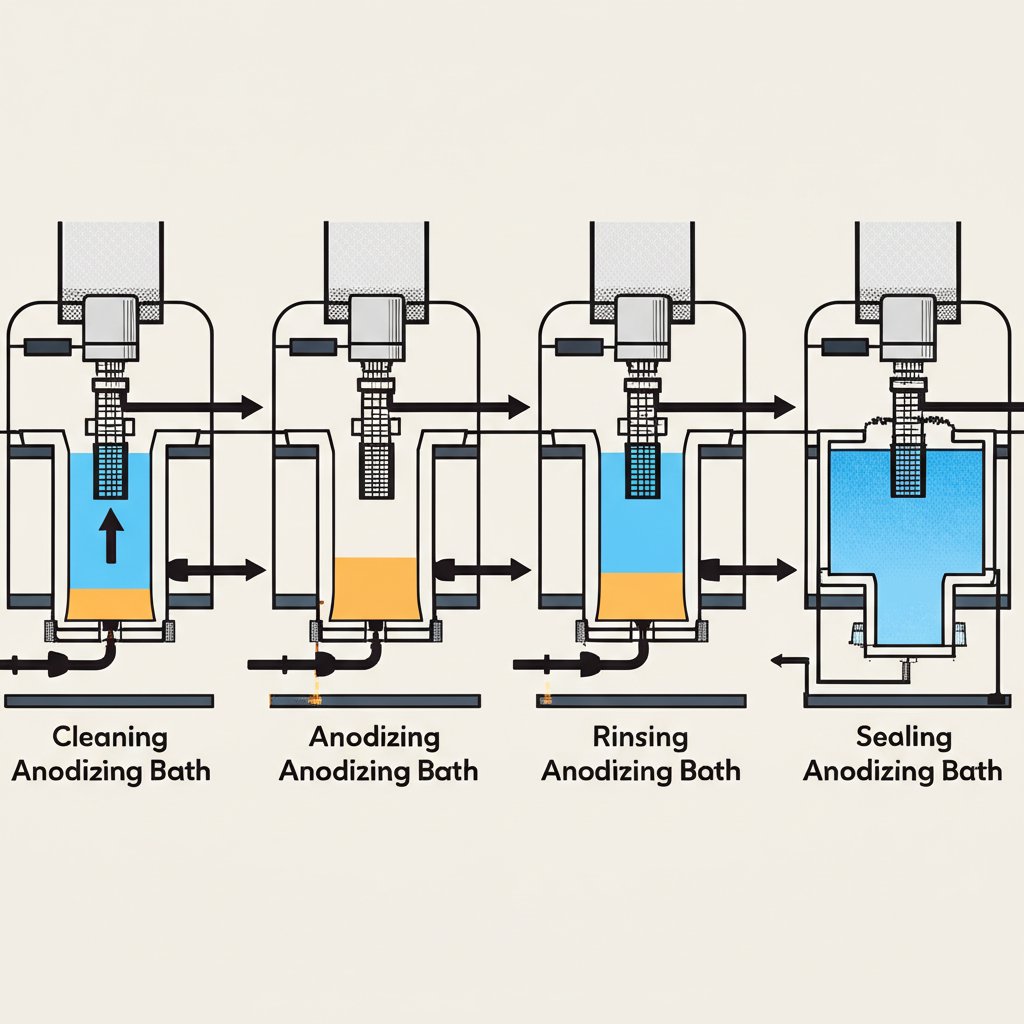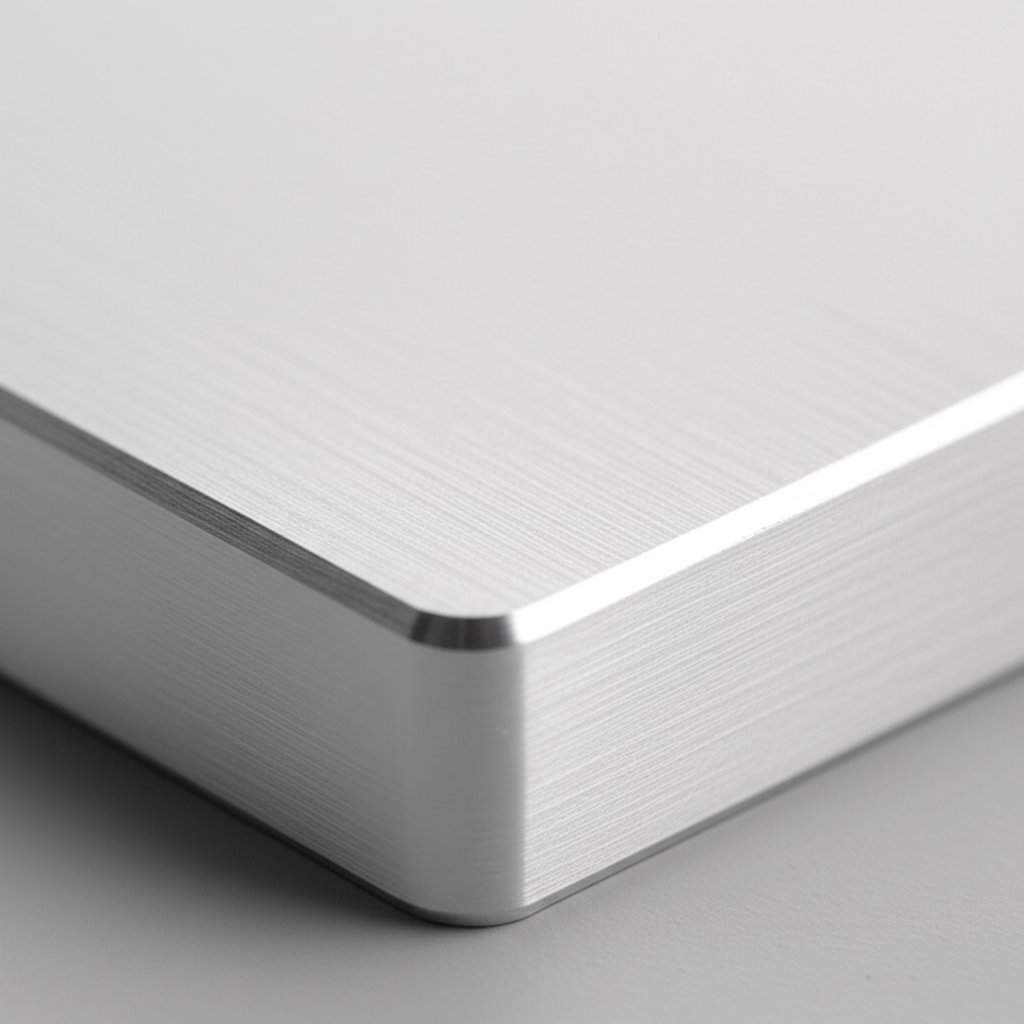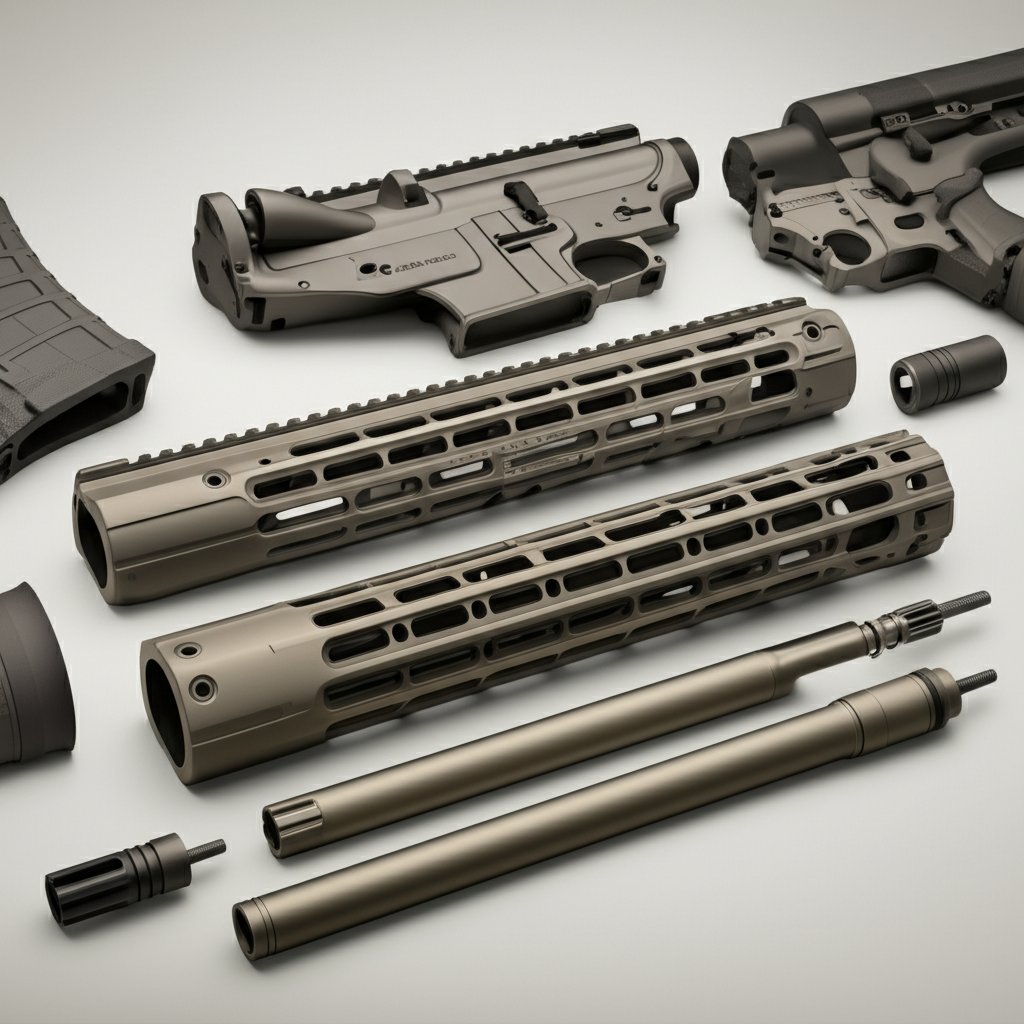
Ever wondered why some aluminum surfaces look sleek, resist wear, and last for years—while others corrode or lose their shine? The answer often lies in a finishing process known as clear anodizing. But what exactly does it mean for aluminum to be "clear anodized," and why do so many industries rely on it?
Clear anodized aluminum is simply aluminum that has undergone a specialized surface treatment called anodizing. This process thickens the metal’s natural oxide layer, making the surface harder, more durable, and much more resistant to corrosion. The "clear" in clear anodized refers to the absence of dyes—so the aluminum retains its natural silver-gray appearance, rather than taking on a colored finish. Imagine the difference between a raw aluminum panel that scratches easily and a clear anodized one that stands up to years of use, all while maintaining a clean, metallic look (Want.net).
When you look around—at modern buildings, electronics, or even household appliances—you’ll notice clear anodized aluminum is everywhere. Its unique combination of lightweight strength, low maintenance, and visual appeal makes it a go-to choice for:
Unlike raw aluminum, which is prone to scratching and corrosion, clear anodized aluminum offers a finish that’s both attractive and practical. Minimal maintenance is required—just occasional cleaning keeps it looking new for years (Sunrise Metal).
This article is designed to give you a complete understanding of clear anodized finishes. Whether you’re specifying materials for a building project, designing a new product, or just curious about this versatile material, you’ll find practical insights on the process, applications, benefits, and care of clear anodized aluminum. Ready to explore what makes this finish so valuable? Let’s dive in.

Ever wondered how aluminum gets that durable, clean, and modern look without a hint of color? That’s the magic of clear anodizing. While it may sound complex, the process is rooted in simple science—and understanding it helps you appreciate why clear anodized aluminum is such a trusted choice across industries.
At its core, clear anodizing is an electrolytic passivation process. This means it uses electricity and a special solution to transform the surface of aluminum, making it harder and much more resistant to corrosion. Unlike painting or coating, anodizing isn’t just a layer on top—it actually grows a new, thicker oxide layer from the metal itself. And when no dyes are added, the result is a clear, natural metallic finish that showcases the beauty of aluminum (AluConsult).
So, how does it work? Here’s a simplified breakdown:
By controlling factors like current density, bath temperature, and time, manufacturers can adjust the thickness and properties of the anodized layer. For clear anodized aluminum, no coloring is introduced, so the natural silver-gray hue of the metal is preserved (Xometry).
Let’s break down the process into practical steps. Each stage is crucial for achieving a flawless, long-lasting clear anodized finish:
You might wonder: why not add color? In clear anodized aluminum, the absence of dyes means the metal’s natural luster and appearance are preserved. This is especially valued in modern architecture, electronics, and design, where a neutral, metallic finish is desirable. Plus, with no colorants, there’s no risk of fading or color mismatch between batches (AluConsult).
Understanding each stage of clear anodizing gives you insight into why this finish is so reliable and consistent. Next, we’ll explore the real-world advantages that make clear anodized aluminum a top choice for durability and design.
When you’re selecting materials for a project—whether it’s a storefront, a piece of industrial equipment, or a high-end consumer product—you want something that stands the test of time, looks great, and doesn’t break the bank. That’s exactly why so many professionals opt for a clear anodized finish on aluminum. But what makes this finish such a smart choice? Let’s break down the real-world benefits that set clear anodized aluminum apart.
Imagine you’re comparing two identical aluminum panels. One is left untreated; the other has a clear anodized finish. After a year outdoors, the untreated panel shows pitting, discoloration, and scratches, while the anodized one still looks almost new. Sounds impressive? These results aren’t just theoretical—they’re backed by experience and industry testing (Want.net).
Here’s what makes the clear anodized aluminum finish so valuable:
Let’s put these advantages into perspective with a few practical examples:
Of course, not all anodized finishes are created equal. The quality and consistency of a clear anodized aluminum finish depend on advanced process control, surface preparation, and strict quality assurance. Manufacturers like Shengxin Aluminum invest in state-of-the-art equipment and continuous improvement to ensure every batch delivers uniform color, optimal hardness, and long-lasting protection. By prioritizing process excellence, they help customers realize the full value of clear anodized finishes—across everything from architectural profiles to precision industrial components.
Ready to see how the right finish can transform your project? Next, we’ll explore the unique visual qualities that make clear anodized aluminum such a favorite among designers and architects.

When you picture a high-end storefront, a sleek electronic device, or a modern architectural panel, what comes to mind? Chances are, it's the crisp, metallic sheen of clear anodized aluminum. But what gives this finish its signature look—and why do designers and architects love it so much?
At first glance, a clear anodic finish might look like polished metal, but there’s more happening beneath the surface. Anodizing transforms ordinary aluminum into a material with a deep, lustrous appearance that’s both subtle and striking. Here’s what sets it apart:
Wondering how clear anodized aluminum stacks up against its raw counterpart? Let’s break it down:
| Characteristic | Raw Aluminum | Clear Anodized Aluminum |
|---|---|---|
| Surface Appearance | Dull, may show extrusion lines, fingerprints, or oxidation marks | Bright, uniform, with refined metallic sheen and minimal surface flaws |
| Color Consistency | Varies with alloy, often inconsistent | Stable, silvery-gray—though subtle variations can occur based on alloy and process |
| Resistance to Staining | Prone to discoloration and staining over time | Resistant to stains, maintains appearance with minimal care |
| Visual Depth | Flat, lacks depth | Enhanced depth and luster due to the transparent anodic layer |
The clear anodizing process not only protects but also refines the look of aluminum, smoothing out imperfections and delivering a finish that stays attractive for years (Orange Aluminum).
It’s no surprise that the clear anodized color is a favorite in both modern and industrial design. Here’s why:
Imagine a corporate headquarters with sunlit, silver-toned panels that never lose their luster, or a kitchen appliance that keeps its shine year after year. That’s the enduring appeal of a clear anodic finish.
With an understanding of its visual strengths, you can see why clear anodized aluminum is not just a practical choice, but a design statement. Next, let’s look at how to source and specify clear anodized aluminum sheets for your own projects, ensuring you get both beauty and performance.
When you’re planning a project—whether it’s a commercial sign, a modern facade, or a durable enclosure—choosing the right clear anodized aluminum sheet can make all the difference. But how do you ensure you’re getting a sheet that fits your needs for size, durability, and long-term performance? Let’s break down the practical steps, options, and expert tips for sourcing and specifying clear anodize aluminum for your next application.
Imagine you’re outfitting a storefront or fabricating a batch of control panels—having the right size and alloy on hand is crucial. Most suppliers stock clear anodized aluminum sheets in a range of thicknesses and widths to accommodate diverse applications. For example, alloy 5005 is a popular choice due to its excellent anodizing properties and consistent finish. Typical sheet thicknesses can range from as thin as 0.032" up to 0.125", with widths commonly available in 36", 48", and 60" formats (SAF). Alloy 3003 is also available for general-purpose needs, though 5005 is preferred when surface appearance is critical.
Sheets can be cut to length or custom-sized for large-scale projects or unique designs, so don’t hesitate to request a quote for non-standard dimensions.
Why do so many industries turn to clear anodized aluminum? The answer is versatility. Here are just a few of the most common uses:
Whatever your industry, clear anodize aluminum offers a combination of corrosion resistance, low maintenance, and visual appeal that’s hard to match.
Sounds complex? Not at all. Specifying the right sheet involves a few key considerations:
| Specification | What to Look For | Why It Matters |
|---|---|---|
| Alloy | 5005 for best anodized finish; 3003 for general use | 5005 ensures color consistency and optimal surface quality |
| Thickness | Match to structural or aesthetic needs (see common sizes above) | Impacts strength, weight, and appearance |
| Anodic Film Thickness | Specify based on exposure: 0.0002"–0.0004" for interiors, up to 0.0007"+ for exteriors | Thicker films offer increased corrosion and wear resistance (SAF Specifications) |
| Type of Sealing | Hot water or nickel acetate sealing | Proper sealing ensures long-term corrosion protection |
| Finish Class | Class 1 (thicker, exterior use), Class 2 (thinner, interior use) | Class 1 is recommended for harsh or outdoor environments |
It’s also wise to request samples—especially for large projects—to confirm color consistency and surface quality. Remember, anodized finishes can show slight variations depending on the alloy and batch, so specifying all details up front helps ensure a uniform appearance across your project.
When sourcing clear anodized aluminum sheet, reliability and customization matter. Reputable suppliers offer a wide selection of alloys, thicknesses, and finishes, plus the ability to match samples or provide custom fabrication. For custom orders—such as unique dimensions or special anodizing requirements—communicate your needs clearly and ask about lead times and minimum order quantities (ETCN Machining).
If you’re seeking a trusted partner for high-quality, custom, or large-scale clear anodized aluminum solutions, Shengxin Aluminum is well-equipped to meet demanding project requirements. Their advanced production capabilities and commitment to quality ensure you get the right material—on time and to spec.
With the right sheet in hand, you’re ready to bring your vision to life—whether it’s a striking architectural element or a durable, functional enclosure. Next, let’s explore how clear anodized aluminum is making a mark in specialized fields like firearms and custom components.

Ever wondered why so many AR15 enthusiasts choose a clear anodized finish for their rifles and parts? If you’ve handled a modern sporting rifle that gleams with a subtle, metallic luster, chances are you’ve seen clear anodized aluminum in action. But what makes this finish so popular in the firearms world—and which AR15 components benefit most from it?
When you’re building or upgrading an AR15, you want parts that can take a beating, resist the elements, and look sharp for years. That’s where clear anodizing shines. This finish is more than just a pretty face—it’s a functional upgrade that enhances both performance and appearance. Here’s why:
Curious which parts are available with this finish? Here’s a quick guide to the most popular clear anodized AR15 accessories and upgrades:
One trend gaining traction among AR15 builders is the use of matching upper and lower clear anodized receiver sets. Imagine a rifle with perfectly aligned, silver-toned receivers—this not only looks striking but also showcases attention to detail and craftsmanship. Builders appreciate the uniformity and subtle shine, which stand out in a sea of matte black or camo rifles.
Another reason for the finish’s popularity? It serves as a blank canvas for further customization. Whether you’re adding colored accents, laser engraving, or custom grips, clear anodized parts provide a versatile base that complements any design direction (Veriforce Tactical).
Whether you’re aiming for a unique build or simply want reliable, easy-to-maintain components, clear anodized AR15 parts deliver on all fronts. Their blend of toughness, corrosion resistance, and modern aesthetics makes them a go-to option for hobbyists and professionals alike.
Next, we’ll see how this versatile finish extends beyond firearms, finding a home in architectural and industrial applications where longevity and design matter just as much.
Ever walked past a sleek building façade or admired the crisp lines of a modern storefront and wondered what makes those surfaces look so refined—and last so long? Chances are, you’re seeing the workhorse of contemporary architecture: clear anodized aluminum. But why has this finish become the go-to choice for architects, designers, and engineers across so many sectors?
Let’s break it down. Clear anodized aluminum offers a rare combination of longevity, weather resistance, and visual appeal. Its unique electrochemical finish forms a tough, transparent oxide layer that not only protects the metal but also enhances its natural, metallic look. Here’s why it stands out in demanding environments:
Imagine the architectural landscape of a city or the interior of a high-tech workspace. You’ll notice clear anodized aluminum in a surprising array of places. Here are some of the most prominent uses:
Why do so many designers keep coming back to clear anodized aluminum? Beyond its durability and sustainability, it provides:
Picture a busy airport terminal with anodized railings that never lose their shine, or a retail storefront whose frames look as pristine after ten years as they did the day they were installed. That’s the real-world value of this finish.
As we move forward, maintaining these surfaces is just as important as choosing them. In the next section, you’ll learn practical methods for keeping your clear anodized aluminum looking its best, year after year.

When you see a building façade or appliance gleaming with that signature metallic luster, you might wonder: How do you keep clear anodized aluminum looking so crisp year after year? The answer is surprisingly simple—routine care and the right cleaning approach. If you’re unsure how to clean anodized aluminum without damaging its protective finish, this guide will walk you through practical, proven steps for maintenance that preserves both appearance and performance.
Clear anodized aluminum is designed to be low-maintenance, but regular cleaning is key to preventing buildup of dirt, grime, or contaminants that can dull or degrade the finish. For most surfaces, the following steps are all you need:
For areas exposed to heavy contamination—like marine environments or industrial settings—cleaning may be needed every month or two. In less demanding locations, annual cleaning is usually sufficient (Stryker T-Tops).
It’s tempting to reach for whatever cleaner is on hand, but some products can do more harm than good. To protect your clear anodized finish, keep these precautions in mind:
| Do | Don't |
|---|---|
| Use mild soap and water | Use abrasive pads or cleaners |
| Clean with a soft cloth or sponge | Apply acidic or alkaline solutions |
| Rinse thoroughly after cleaning | Clean surfaces in direct sunlight or while hot |
| Test new products on a small area first | Neglect regular cleaning, especially in harsh environments |
With these simple, effective cleaning methods, you can keep your clear anodized aluminum surfaces bright, resilient, and looking their best for years to come. Next, we’ll dive into long-term preservation strategies to further extend the life and beauty of your anodized items.
Have you ever noticed how some aluminum features stay pristine for decades, while others lose their luster or show signs of wear? The difference often lies in how well their clear anodized finish is protected and maintained. If you want your anodized surfaces to keep looking their best—whether on a window frame, architectural panel, or appliance—these practical, expert-backed tips will help you extend their life and preserve their appearance.
Imagine a busy storefront or an outdoor fixture—daily bumps, scratches, and weather can all take a toll. To minimize risk:
Did you know that certain chemicals can compromise a clear anodized finish? Here’s what to avoid:
Ever wondered why some finishes resist weathering better than others? The secret often lies in the integrity of the sealing step during anodizing—and in the use of additional protective coatings when needed:
Think of your clear anodized finish like a car’s paint job—routine checks catch small issues before they become bigger problems. Here’s how to stay ahead:
| Do | Don't |
|---|---|
| Inspect regularly for signs of wear or damage | Ignore corrosive spills or runoff |
| Use neutral pH cleaners and soft cloths | Apply strong acids, alkalis, or abrasive tools |
| Reapply wax or lacquer if recommended | Neglect sealant maintenance |
| Consult professionals for major repairs | Attempt aggressive DIY restoration on anodized surfaces |
By following these tips, you’ll help your clear anodized finish resist the effects of time, weather, and daily use. With a little care and attention, your aluminum surfaces will maintain their durability and shine for years—making them a wise investment for any project. Up next: a summary of the key benefits and a look at why quality manufacturing matters when specifying clear anodized aluminum.
When you’re weighing materials for your next project, have you ever wondered what truly sets clear anodized aluminum apart? After exploring its process, benefits, and wide-ranging uses, it’s clear why this finish stands out in modern architecture, industry, and product design. Let’s recap the essential reasons why so many professionals trust a clear anodized finish—and how you can make the most of its unique advantages.
Imagine a material that not only looks sleek and modern, but also stands up to years of wear, weather, and daily use. That’s exactly what clear anodized aluminum delivers. Here’s a quick summary of its standout qualities:
The versatility of clear anodized aluminum is unmatched. Whether you’re designing a high-rise, fabricating industrial equipment, or creating consumer electronics, this finish adapts beautifully. Here are just a few of its most popular applications:
Wherever durability, style, and reliability matter, clear anodized aluminum consistently delivers results that exceed expectations (Want.net).
As you consider using a clear anodized finish in your next project, remember that not all anodized aluminum is created equal. The final quality depends on precise process control, careful surface preparation, and rigorous quality checks. Choosing a reputable supplier ensures you get consistent color, optimal hardness, and long-term protection—avoiding the pitfalls of uneven finishes or premature wear.
If you’re searching for a trusted partner for custom or large-scale clear anodized aluminum solutions, Shengxin Aluminum combines advanced manufacturing, strict quality standards, and a wide range of options to help you bring your designs to life—whether you need architectural profiles, industrial components, or precision parts.
Now that you understand the process, benefits, and best practices for clear anodized aluminum, you’re equipped to make informed decisions for your next project. Whether you’re seeking durability, aesthetics, or sustainability, this finish offers a proven solution. Explore your options with quality-focused suppliers and see how a clear anodized finish can elevate your design, performance, and peace of mind.
Clear anodizing is an electrochemical process that thickens the natural oxide layer on aluminum, increasing its hardness and resistance to corrosion. This finish preserves the metal's silver-gray appearance while providing enhanced durability, making it ideal for architectural, industrial, and consumer applications.
The main difference lies in the use of dyes. Clear anodized aluminum retains its natural metallic look because no color is added during the process, while black anodized aluminum includes a pigment for a dark finish. Both offer similar protection, but the choice depends on desired appearance and design needs.
Yes, you can paint over clear anodized aluminum, but proper preparation is essential. The surface should be cleaned and an etching primer applied to ensure paint adhesion. Without this step, paint may not bond well to the anodized layer.
Clean clear anodized aluminum with mild soap and water using a soft cloth or sponge. Avoid abrasive pads and harsh chemicals, as these can damage the protective finish. Regular cleaning and gentle handling help maintain its appearance and longevity.
Clear anodized aluminum sheets are widely used for signage, architectural panels, appliance facings, electronic enclosures, and decorative elements. Their blend of strength, corrosion resistance, and sleek appearance makes them popular in both commercial and residential projects.
 dịch vụ trực tuyến
dịch vụ trực tuyến 0086 136 3563 2360
0086 136 3563 2360 sales@sxalu.com
sales@sxalu.com +86 136 3563 2360
+86 136 3563 2360